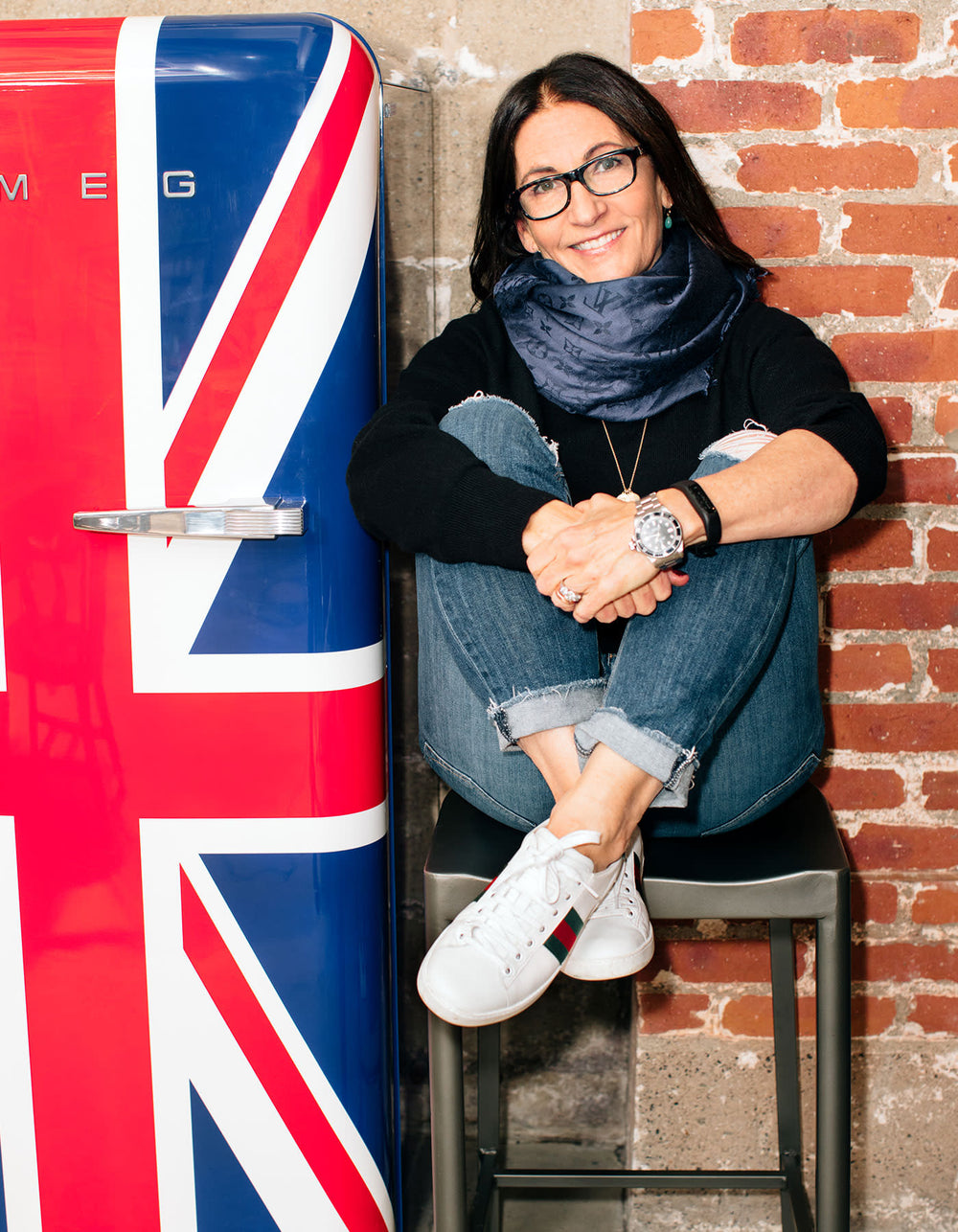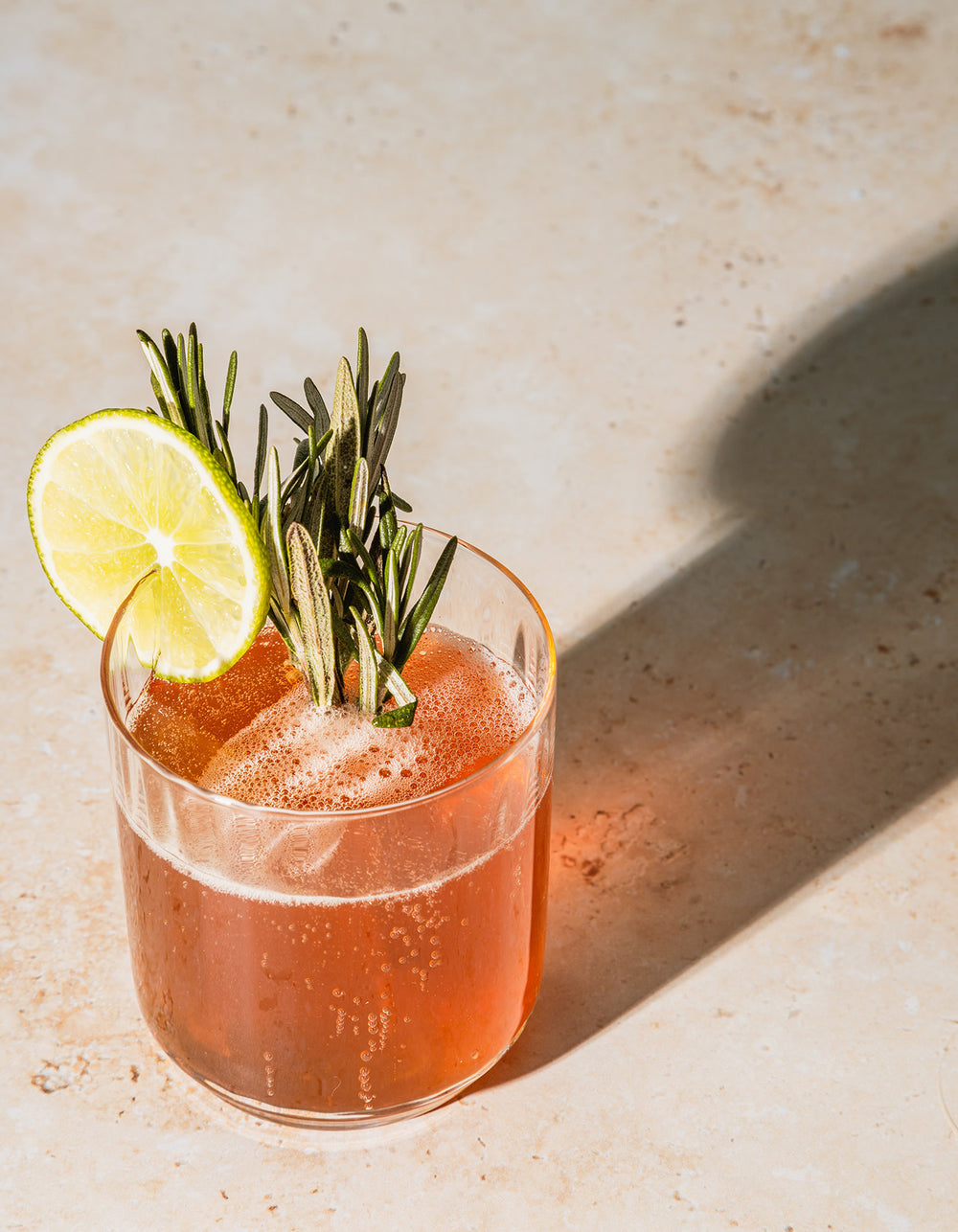
For a decade, Tricia Williams has been dispensing food as medicine to clients of her original, über-customized meal-delivery service, Food Matters. Her genius for recipes (like this healthy take on chicken parmesan) has made her a go-to for ideas to make food that’s good for you actually taste good—and has fueled her business’s growth.
Last year, the pastry and restaurant chef turned nutritionist launched a plan-based service called Daily Dose. And now, all the goodness of a Daily Dose meal (think turmeric fermented eggs, matcha bars, and coconut collagen yogurt) is available on the go via her new Daily Dose Life line, available at New York City Brooklyn Roasting Company locations and at a summer popup at Surf Lodge, in Montauk, and coming soon to Clean Market, at 2nd Avenue and 56th Street in Manhattan. We talked to Tricia about how she is making healthy food exciting (and more accessible), the things that get her creativity going, and the next big ingredients we’ll all soon be eating more of.
I love the look of the Daily Dose Life logo. It’s really bright and graphic.
That was my goal: I wanted to make people fall in love with healthy eating, and make it fun. So our packaging is kind of cartoony, with a superhero theme. The audience for health products is dominated by women; nothing is marketed to men. Which is funny to me, because my client base is 50 percent male. Because of that, and probably because I’m the mother of two boys, I wanted to make something for men that would attract them to healthier eating. Every dish we make, even the 70 percent dark chocolate bar we’re bringing to market, has a hero ingredient in it. That chocolate bar that has schisandra, which is a berry that’s considered an adaptogen; it helps the body manage and process stress. We also ferment hard-boiled eggs. They’re so colorful, they look like Easter eggs. There’s a turmeric flavor, which is anti-inflammatory, and a beet one, which is good for circulation. Everything has a special hero ingredient with a specific intention and focus. I think it’s a fun way to put some messaging into the food and help educate people.

That’s so smart, and creative. Where do you find the time to brainstorm ideas like that?
I’m always looking at what other people are doing for inspiration. I think what also helps me is that I didn’t start out as a health food chef; I started out in fine dining. I have that as my roots, and then I get inspired by all these healthy things that are going around. In fact, my executive chef in my kitchen now, his background is from fine dining, too. He worked for Jean-Georges and a couple other restaurants in New York. But now he has to play by my rules. It’s great to have that sensibility about food. I think makes your health food more accessible to people, and also more delicious. But to answer your question about time, I have two kids, so I’m always juggling and fitting in stuff where I can.
What is an average day for you? Running three businesses, it must be crazy.
When everything goes the way I want, I usually wake up at 5:30 in the morning, and I meditate for 15 minutes. Then I get some work done before my kids get up, which is about 6:30. That’s when the vortex starts. My husband and I get the kids off to school—they’re at different schools. Then I usually exercise. Right now, I’m training for a half Ironman, which is really ambitious at 46, but it’s fun. I weight train, too. My kitchen is in Jersey City, and I live in Tribeca, commute there is only about 10 minutes. I get work done.
In addition to running my businesses, I do a lot of development. I worked with Hu Kitchen before it opened. Right now, I am small partners with Claire Olshan, who founded Fivestory; we developed a line of really mindful snacks that will hit the market in September. Projects like that, where we’re continuously developing new foods, are the really fun, creative part of my job. Then I come home, and I usually make dinner and we eat together as a family. I’ve had clients say that don’t eat together with their families, and I’m like, If there’s one thing I could change about your life, it would be to unplug and take 20 or 30 minutes to eat together. That’s the most important time of my day, just having that connection.

What are you working on that you’re excited about?
Growing Daily Dose Life, and making this style of eating more accessible. What I’ve noticed from being in the Brooklyn Roasting Company stores is that our most successful kiosks are in neighborhoods where healthy food isn’t as accessible. There’s a location on Flushing Avenue in Brooklyn, across from Steiner Studios, and it’s the only place nearby to get a smoothie. There’s a lot of demand for it, and it got me thinking, Why not bring these kiosks into hospitals and other places where there’s a need for healthy food but no access to it? Things like that.
About the food, the pulled pork buns and waffles I saw on your Instagram look really delicious. Are people surprised when you tell them those things can be healthy for them?
So our food is hard-core organic, pasture-raised, no gluten, mostly no dairy, mostly low carb. I have one client who’d been getting sandwiches and wraps made out of teff and quinoa. And after two years, she said to me, “I think I’m ready to go gluten-free.” I’m like, “You have been gluten-free, for two years!” I think it’s so cool that she didn’t realize that none of this stuff is made with wheat.

Are there things you’ve learned that apply in general to making healthy swaps?
Most people seem to have an easier time if you take out the gluten, sugar, and dairy in their diet. For dairy, I always like to puree young Thai coconut meat and use that instead, to mimic the texture. It works so well. Cashews and nutritional yeast work well together to get a cheesy flavor. For sweeteners, I like to use ingredients that are as close as possible to what you’d find in nature, like small amounts of raw honey or maple. For baking, coconut sugar tends to act like white sugar in baking, so it’s a great swap.
People seem to be getting a little more used to that kind of thing.
When I started out 10 years ago, chia seeds were weird. No one knew what they were. And now, the supermarket near me in Jersey City has a whole aisle of things like chia seeds and coconut oil and steel cut oats and stuff that wasn’t available in markets like that before. I feel like the world is changing, a shift is happening.
What other food trends do you predict we’ll see more of?
I think we’re going to see more and more adaptogens paired with food in products and in the supplement world—an explosion. Moringa is trending in a big way. You’re going to see it in a lot more products than it already is. And the ketogenic diet. It has been around for a long time, but I think we’re just on the upswing of it, and it’s still going to trend and maybe get to where Paleo is. It’s a great short-term weight loss solution, but I don’t know about it as a long-term diet. It seems to work a lot better for men long-term than it does for women. For women, it’s a great stopgap for weight loss.













































 Miracle Balm
Miracle Balm
 Just Enough Tinted Moisturizer
Just Enough Tinted Moisturizer
 What The Foundation
What The Foundation


